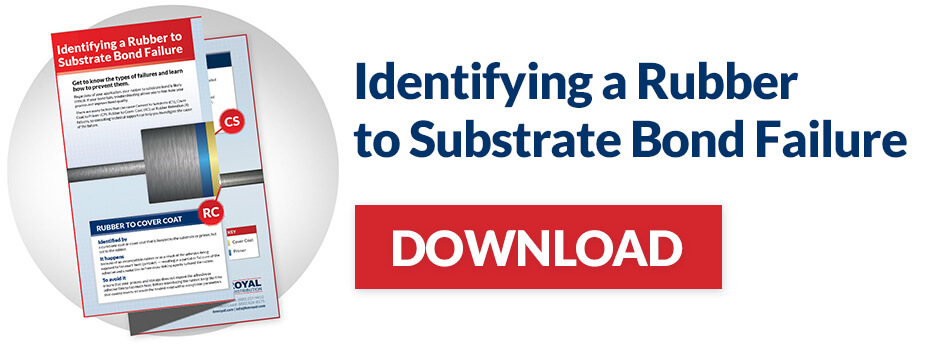3 Tips for Prepping Surfaces for Rubber to Substrate Bonding
Reading Time: 2 minutes
When trying to pinpoint the cause of a rubber to substrate bonding (RTS) failure, you may consider the type of bonding adhesive or cover coat. But what about your cleaning process?
Poor surface preparation is one of the leading causes of rubber to substrate bonding failures. In fact, many manufacturers contaminate their substrate surface during the cleaning process without even realizing it.
Here are three tips to help you ensure proper surface preparation and achieve a high-quality rubber to substrate bond.
1. Avoid contamination before and during treatment.
If there is a barrier between the substrate and the adhesive, the bond will suffer. That’s why you should always look for any contamination before treating the surface. Is there any rust? What about oil? Did grit blasting leave behind any residue?
Keep in mind that buildup is not only an issue before prepping, but also during. If you’re not careful, you could easily contaminate the surface during the cleaning process.
For example, pressurized air lines may contain lubricating oil. If this oil is used during the cleaning process, it can contaminate a clean substrate and negatively impact your bond.
This is especially important when grit blasting, as the grit residue can stick to the oil left by the pressurized air. Similarly, in a caustic detergent bath, unremoved oil can float around the bath and reattach to the substrate — potentially leading to a weaker bond.
To avoid contamination, make sure your oil removing mechanisms and machinery are functioning properly.
2. Ensure proper storage and handling after treatment.
Before and during cleaning aren’t the only times contamination can occur. It’s also important to properly store and handle the substrate after treatment. If you wait too long after a surface treatment like phosphating, the surface may start to rust.
It doesn’t matter what type of cleaning process you use. There’s always a possibility of contamination. Take extra care between treatment and adhesive application by keeping substrates away from potential sources of contamination.
If you use a sealant, make sure that it is compatible with the rubber to substrate bonding adhesive. If it’s incompatible, this can be a boundary layer between the substrate and the adhesive, weakening bond quality. This sealant can also be removed when the substrate is ready to be used.
3. Follow the instructions to the letter.
Treat your adhesives like you would any new electronic device or appliance. Take the time to carefully read the instructions and gain a deeper understanding of proper usage conditions.
For example, let’s say your adhesive needs to be diluted for your specific application. Any variation from that process could result in a weaker rubber to substrate bond. Following instructions is essential to avoiding cross-contamination and achieving optimal bond strength.
Not sure what’s causing your rubber to substrate bonding failure? Or need help deciding on the right bonding adhesive for your application?
H.M. Royal has material experts on hand to answer your technical questions and help you strengthen your bond. Our entire team is dedicated to offering the highest level of expertise and customer service. We actively participate in the rubber industry’s leading organizations and events to ensure we offer the best solutions for your needs.
 (800) 257-9452
(800) 257-9452



